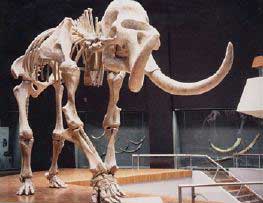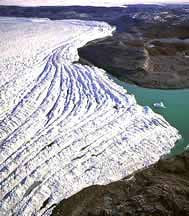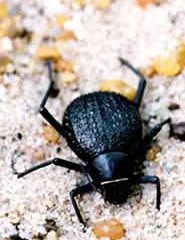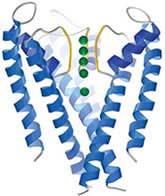Latest News

Salt holds samples of ancient seas
Water trapped for millions of years gives a glimpse of oceans’ turbulent past.
Drops of sea water entombed within salt crystals millions of years ago are giving researchers a glimpse of ancient oceans. The water, trapped during evaporation, reveals that the seas have seen large chemical changes during their history.
“The consensus had been that sea-water chemistry hadn’t changed that much over the past 600 million years,” says geochemist Juske Horita of Oak Ridge National La

Massive Black Hole’s Missing Ring of Dust Baffles Astronomers
Some galaxies may have torus envy, if a new study is any indication. The most sensitive imaging yet of nearby galaxy M87’s core reveals that the black hole residing there has either a nonexistent or much fainter ring of dust around it compared with its peers. Scientists had thought that these rings were key features of such highly energetic galaxies. The puzzling finding appears today in the Astrophysical Journal Letters .
The current model of active galaxies such as M87 posits that

Researchers Reconstruct the Rise of the Woolly Mammoth
Examine any depiction of Ice Age life and you’re likely to find at least one—a woolly mammoth, that is. But popular appeal notwithstanding, the evolutionary history of this prehistoric beast has proved somewhat difficult to pin down. To that end, findings published today in the journal Science provide some much needed insight.
Working from an extensive Eurasian fossil record going back some 2.6 million years, Adrian Lister of University College London and Andrei V. Sher of the Russian Acad

Melt down
Half a century of thinning ice leaves Greenland’s future looking wet.
There is new evidence that the Greenland ice pack is in retreat. The finding may be a foretaste of still more rapid melting, and in turn, rising sea levels.
The ice sheet over northwest Greenland has thinned by 10-15 cm a year over the past 40 years, two scientists calculate 1 . The trend indicates “a significant long-term thinning”, says one, Niels Reeh, of the Technical University of

Water wings aid desert survival
Humans learn water-gathering trick from bumpy beetle.
A desert beetle turns fog into drinking water with its wings, new research reveals. Materials mimicking the insect could help humans survive harsh environments.
Southwest Africa’s Namib Desert is one of the hottest and driest places on Earth. There is no rain, but on about six mornings a month a fog blows in off the Atlantic and across the land at gale force.
The beetle Stenocara traps this fleeting resour

Pores for thought
Dazzling snapshots show how ions power nerve signals round the body.
“Potassium channels underlie all our movements and thoughts,” says Rod MacKinnon of Rockefeller University in New York. His team has now unravelled the molecular mechanics of these minute protein pores. Some say the work merits a Nobel Prize.
Potassium (K + ) channels power the transmission of nerve signals through the body and the brain by ushering K + ions in and out of our cells. MacKin











